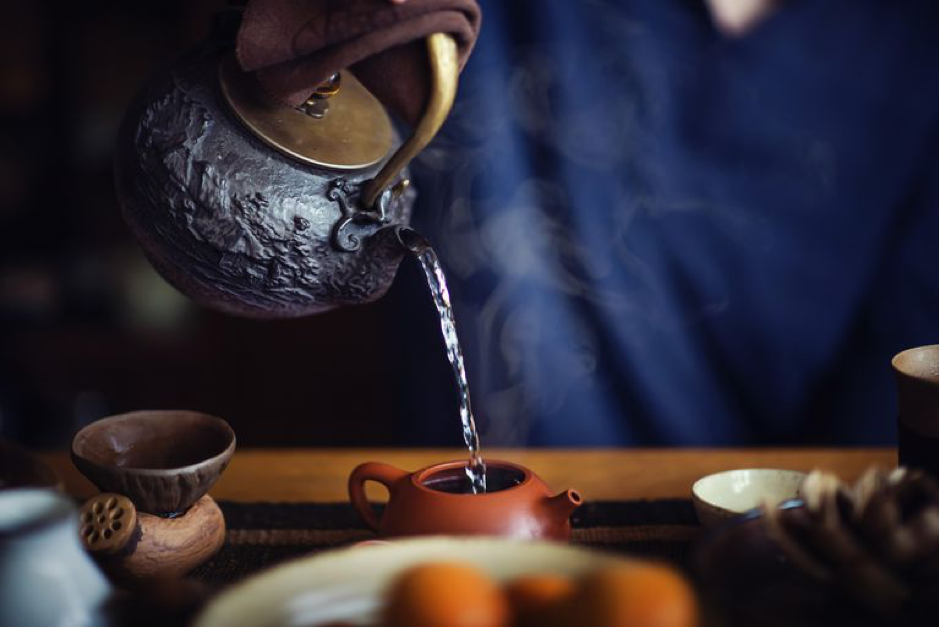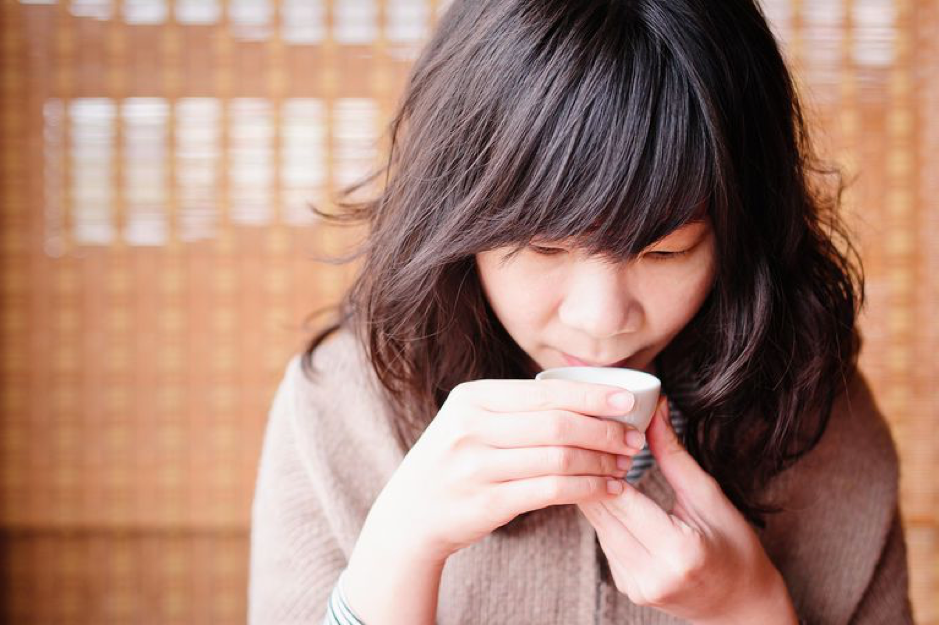Guide to Chinese Tea Ceremonies and Brewing Chinese Tea
Traditional Chinese tea ceremonies are often held during formal occasions like Chinese weddings, but they are also done to welcome guests into one's home.
Gather all the tools you need to perform a traditional Chinese tea ceremony: teapot, tea strainer, kettle (stove top or electric), tea pitcher, brewing tray, deep plate or bowl, tea towel, water, tea leaves (not bagged), tea pick, tea leaf holder, tongs (挾), narrow snifter cups, tea cups, and optional tea snacks like dried plums and pistachios.
1. Prep the Chinese Tea Set

To prepare the Chinese tea set, heat water in a kettle. Then, place the teapot, snifter tea cups and regular tea cups in the bowl and pour the heated water over them to warm up the tea set. Then, remove the teapot and cups from the bowl. The tongs may be used to handle the cups if they are too hot to handle with your hands.
2. Appreciation of Tea Is Key

In a traditional Chinese tea ceremony, the tea (traditionally oolong tea) is passed around for participants to examine and admire its appearance, aroma, and quality.
3. Time for Tea

To make Chinese tea, use the tea leaf holder to scoop the loose tea leaves from the tea canister.
4. Tea Brewing: The Black Dragon Enters the Palace

Using the tea leaf holder, pour the tea leaves into the teapot. This step is called 'the black dragon enters the palace.' The amount of tea and water will vary on the type of tea, its quality, and the size of the teapot but generally, one teaspoon of tea leaves for every 6 ounces of water will do.
5. It's Getting Hot in Here

Heating water to the proper temperature is important when making Chinese tea. Heat cool, spring mountain or bottled water to the following temperatures:
White and green: 172° - 185°F
Black: 210°F
Oolong: 185° - 212°F
Pu’er: 212°F
Avoid distilled, soft, or hard water.
Next, place the teapot into the bowl, raise the kettle at shoulder length above the kettle, and pour the heated water into the teapot until it overflows.
After pouring the water, scoop away any excess bubbles or tea leaves and place the lid on the teapot. Pour hot water onto the teapot to ensure the temperature inside and outside the teapot is the same.

Pour the brewed tea into the tea pitcher. Using the tea pitcher, fill the tea snifters with tea.
To simplify the process or for those whose tea sets do not have snifter cups, you can opt to pour the tea directly from the teapot into the regular tea cups, skipping the use of the tea pitcher and snifter cups.
7. Don't Drink the Tea Yet

After filling the snifter cups with tea, place the teacups upside down on top of the narrow tea cups, which is a solemn act said to bring prosperity and happiness to guests. Using one or two hands, grab both cups and quickly flip them so the snifter is now inverted into the drinking cup. Slowly remove the snifter cup to release the tea into the teacups.
Do not drink the tea. Instead, it is discarded.
8. Time to Pour

Keeping the same tea leaves, holding the kettle just above the teapot, pour the heated water into the teapot. The water should be poured just above the teapot so as to not remove the flavor from the tea leaves too quickly. Place the lid on the teapot.
9. The Best Things Come to Those Who Wait

Steep the tea. The size of the tea leaves and quality determine the steeping length. In general, whole leaf tea is steeped longer and high-quality tea has a shorter brewing time.
Green tea: 30 seconds to 3 minutes
Black tea: 3 to 5 minutes
Oolong tea: 30 seconds to 10 minutes
10. Almost Done...

Pour all the tea into the tea pitcher. Next, pour the tea into the tea snifters. Then, transfer the tea from the snifters to the tea cups.
11. It's Finally Time to Drink Chinese Tea

It's finally time to drink the tea. Good etiquette dictates that tea drinkers cradle the cup with both hands and enjoy the tea’s aroma before taking a sip. The cup should be drunk in three sips. The first sip should be a small sip, the second sip is the largest, main sip and the third sip is to enjoy the aftertaste and empty the cup.
12. The Tea Ceremony Is Complete

Once the tea leaves have been brewed several times, use the tongs to pull out the used tea leaves and place them in the bowl. The used tea leaves are then shown to guests who should complement the tea’s quality. The tea ceremony is officially complete with this step, but more tea can be made after cleaning and rinsing off the teapot.
